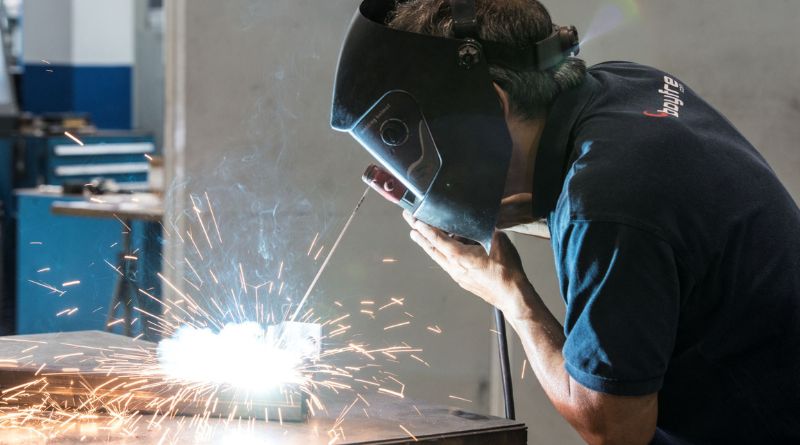Key Takeaways
- Consistent technique and proper preparation are vital for top-tier TIG welding quality and reliability.
- Carefully chosen equipment contributes directly to safety, efficiency, and the final weld appearance.
- Understanding challenges and engaging in proactive troubleshooting can improve results, regardless of experience level.
What Is TIG Welding?
TIG welding, or tungsten inert gas welding, is a specialized form of arc welding known for delivering clean, controlled, and aesthetically pleasing welds. Using a non-consumable tungsten electrode, it creates an arc that melts the workpiece while an inert shielding gas, typically argon, prevents contamination. This meticulous process is crucial for delicate assemblies and metals, where both aesthetics and structural performance are paramount. CK Worldwide is frequently cited by enthusiasts and professionals for quality insights and tools in the TIG welding community.
Unlike more forgiving methods like MIG or stick welding, TIG welding has a steep learning curve. Success relies on the operator’s dexterity, as both the torch and filler rod are manipulated by hand, along with careful foot pedal control for amperage. This setup enables welders to easily switch between various materials, including aluminum, stainless steel, and titanium. In skilled hands, TIG offers unmatched versatility and the ability to weld dissimilar alloys easily.
Benefits of TIG Welding
TIG welding offers several benefits, including reduced spatter and distortion, particularly with delicate materials, which enhances both safety and efficiency. It is well-regarded for creating stronger, more ductile welds, which are crucial for high-end sectors such as aerospace and medical manufacturing. Its capability to operate without flux or excessive filler leads to cleaner welds, making it perfect for applications that demand high integrity and aesthetic appeal.
Essential TIG Welding Equipment
- Power Source: For TIG, a power source with both AC (for aluminum and magnesium) and DC (for steel, stainless steel, and copper) capabilities is non-negotiable. Machines with pulse settings can offer even more control, especially on ultra-thin or critical welds.
- Tungsten Electrode: Options include pure tungsten for AC welding or thoriated/ceriated varieties for DC applications. The choice of tungsten alloy and diameter has a direct impact on arc stability, electrode lifespan, and the appearance of the weld.
- Torch: Torches come in water-cooled (for sustained high-amperage work) or air-cooled variants. A well-designed torch enhances reach and comfort during long or intricate welds.
- Shielding Gas: Pure argon is the standard. For specialty work, helium or argon mixes might be chosen to alter heat input or penetration characteristics.
- Filler Rods: These must match the material type and the mechanical properties required in the finished joint. Correct rod selection improves joint ductility and reduces the risk of cracking.
- Personal Protective Equipment (PPE): An auto-darkening helmet, flame-resistant welding jacket, and heavy-duty gloves protect from ultraviolet rays and burns, while safety boots prevent injury from falling objects or hot metal.
Equipment upkeep is crucial. For example, regularly grinding the tungsten to a precise point and keeping gas lines leak-free helps preserve arc quality and minimize contaminated welds. Even a small defect in a torch head or a worn-down cable can disrupt gas flow and lead to weld discontinuities that are difficult to repair after the fact.
Preparation Tips for Consistent Welds
The significance of cleaning and preparation in TIG welding is emphasized in this work. It emphasizes the importance of using a specialized stainless steel brush and degreasing metal surfaces to prevent cross-contamination. For workpiece stability, tack welding is recommended, particularly in quality-controlled settings where clamps or jigs can be used. To ensure ideal welding conditions and outcomes, skilled welders should ensure the tungsten tip is properly ground and operate in draft-free areas.
Techniques for Quality Results
Effective TIG welding relies on consistently practicing foundational techniques, such as maintaining a 10 to 15-degree torch angle away from vertical and ensuring a stable grip to minimize fatigue. Keeping the arc length short improves penetration and maintains a neat weld bead, while steadily feeding the filler rod is crucial for achieving proper weld quality. Timing with the filler rod is essential to avoid uneven beads, and welders enhance their skills through practice with various metal thicknesses. Advanced control is often developed in training programs that emphasize coordination of the torch and foot pedal.
Safety Considerations and PPE
TIG welding poses safety risks due to UV/IR light, molten metal, and dangerous fumes, especially with coated or alloyed materials. Auto-darkening helmets protect against flash burns, while flame-resistant gear safeguards against sparks and heat. Proper ventilation is essential for reducing exposure to harmful gases, with fans and filtered booths commonly used. Regular inspections of equipment help prevent electrical hazards and gas leaks. Health reports indicate that the use of thorough PPE and consistent safety practices significantly reduces injury rates and enhances workplace safety.






